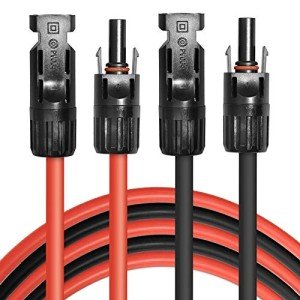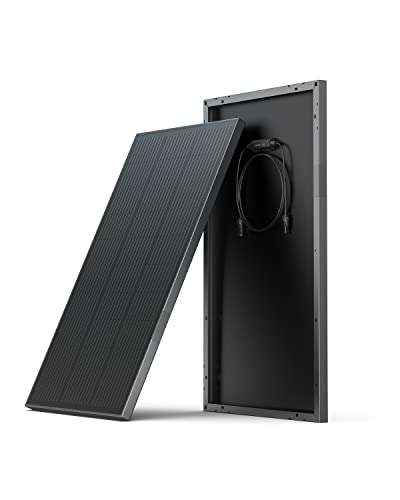Solar panels are pretty cool because they turn sunlight into electricity. When sunlight hits the solar panels, a material called silicon in the panels absorbs that light. This process creates an electric field which generates electricity. It’s like magic, but it’s really science at work!
Here’s how it goes down: The solar panel is made up of many smaller units called solar cells. Each cell has two layers of silicon. One layer has extra electrons (negative) and the other layer has fewer (positive). When sunlight strikes, it knocks some of those electrons loose from the silicon. These freed electrons start moving around, and that movement creates an electric current. This is why we need sunlight; without it, the whole thing wouldn’t kick off!
Once the electricity is created, it flows through wires into an inverter. The inverter’s job is to convert the direct current (DC) from the solar panels into alternating current (AC), which is what your home appliances need. So, every time you flip a switch to turn on a light, you’re using the electricity made by your solar panels! Understanding how do solar panels work helps you see just how efficient and eco-friendly they really are.
After the inverter does its thing, the electricity goes into your home to power everything from your fridge to your TV. If your solar panels produce more power than you need, some systems let you sell that extra juice back to the grid. It’s a win-win situation, saving you money and helping the planet!
Key Components of Solar Panel Systems
The main player in a solar setup is the solar panel itself. These panels, made up of photovoltaic cells, catch sunlight and convert it into electricity. They’re built to withstand the elements, so they can last for years while delivering consistent power. Watch for the efficiency rating when choosing panels; a higher rating means more electricity generated from the same amount of sunlight.
Next up is the inverter. Think of it as the translator in your solar energy system. The solar panels generate direct current (DC) electricity, but most of your home appliances run on alternating current (AC). The inverter changes DC into AC, making it usable for your daily needs. A good inverter will ensure you get the most out of the energy your panels produce.
You’ll also need some sort of racking system. This is what holds your solar panels in place, whether on your roof or in your yard. A sturdy racking system is crucial. It keeps panels secure and at the right angle for optimal sunlight exposure. Placement matters a lot here, so talking to a professional can make a big difference in your setup.
Lastly, don’t overlook the importance of batteries if you want to store excess energy. They come in handy during those cloudy days or at night when the sun isn't shining. Investing in a quality battery can give you peace of mind that you’ll have power when you need it most, showing how do solar panels work beyond just generating electricity during the day.
PHITUODA 10 AWG Solar Panel Extension Cables, 2 Pack
Get your solar setup connected easily with these durable and reliable extension cables
Product information
$12.99
Product Review Score
4.63 out of 5 stars
87 reviewsProduct links
The Benefits of Choosing Solar Power
Choosing solar power comes with a truckload of benefits. First up, it saves you money. Once you install those solar panels, you’ll start seeing lower electricity bills. You might even earn credit for any extra energy you send back to the grid. That means your investment in solar can pay off big time.
Then there's the environmental factor. Solar energy is clean and green! By using sunlight instead of fossil fuels, you help reduce pollution and your carbon footprint. This is a win-win for you and Mother Earth. It’s a simple way to do your part in combating climate change.
Let’s not forget about energy independence. With solar panels, you're less reliant on the grid. This means, when storms hit or there’s a blackout, you can keep your lights on and your fridge running. It gives you peace of mind, knowing you have a backup when the power goes out.
Plus, solar power can increase your home’s value. Homebuyers often look for energy-efficient features, and solar panels check that box. So, if you ever decide to sell, you might find that potential buyers are willing to pay a premium for a home with solar energy systems in place.
If you’re wondering, "How do solar panels work?" the answer’s pretty straightforward. They convert sunlight into electricity, which you can use right at home. It's a smart move for your wallet, the environment, and your home’s value all rolled into one.
20FT Solar Panel Extension Cable with Connectors
Extend your reach and power up your solar setup with this durable 20FT extension cable
Product information
$39.99 $27.99
Product Review Score
4.93 out of 5 stars
82 reviewsProduct links
Common Myths About Solar Panels Explained
There are a lot of myths floating around about solar panels that can confuse folks. Let’s break a few of them down so you can get a clear picture of how solar panels really function. Understanding how do solar panels work means knowing the facts, not just the rumors.
First off, many people think that solar panels don’t work well on cloudy days. That’s simply not true! Solar panels harness sunlight, even when it’s cloudy. They’ll generate less energy compared to bright sunny days, but they’re still effective. So, if you live in an area with mixed weather, don’t worry – solar power can still work for you!
Another common misconception is that solar panels are way too expensive. Yes, the upfront cost can be high, but think about the long-term savings on your energy bills. Plus, there are often tax credits and incentives that can help you save money upfront. In the long run, many people find that going solar pays off big time.
Some folks also believe that solar panels require a ton of maintenance. The truth? Most solar panels are pretty low maintenance! Just keep them clean and check for any debris from time to time. That’s really all you need to do. They’re built to last for years with minimal fuss, making them a hassle-free option.
Lastly, let’s talk about energy storage. Many assume you can’t store solar energy for later use. While it’s true that traditional setups might send excess power back to the grid, adding batteries lets you store energy for when you need it. This means you can still use solar power at night or during an outage, making your energy solution even more reliable.






